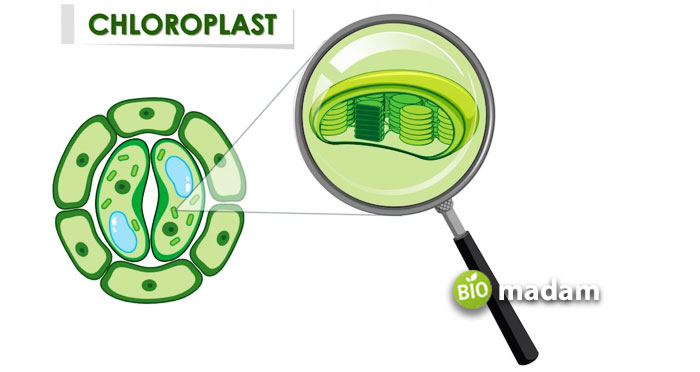Plants are an important part of our food chains and food webs as producers, as they have the ability to produce food through photosynthesis. However, these cells undergo other processes as well, including cellular respiration. The process of photosynthesis forms a circle to complete the plant’s needs and functions, whereas cellular respiration provides energy for cellular functions. Like other eukaryotic cells, plants also perform cellular respiration.
Keep reading the article to find out everything about cellular respiration in plants.
What is Cellular Respiration?
Cellular respiration is the process that allows living organisms to produce energy. It is similar, but not identical to respiration in humans, where we breathe in oxygen and breathe out carbon dioxide. Cells carry out the same function using oxygen to produce energy as ATP and carbon dioxide as a by-product.
Plants use food molecules such as carbohydrates, proteins, and fats to carry out cellular respiration. The following equation represents the process:
C6H12O6 + 6O2 → 6CO2 + 6H2O + 32 ATP
Does Cellular Respiration Occur in Plants?
Cellular respiration occurs in all organisms, including plants, to form energy from food molecules and oxygen. The process takes place in mitochondria by converting food into ATPs that provide energy to all cellular functions. All plants need energy, which makes cellular respiration essential to all living organisms.
While photosynthesis occurs in stems and leaves, respiration takes place in all parts of the plant, including stems, leaves, and roots. However, you must not confuse cellular respiration with photorespiration.
What is the Cellular Respiration Process in Plants?
The main purpose of respiration results is the formation of ATP from glucose. The conversion takes place through three different steps, namely:
- Glycolysis
- Krebs cycle
- ETC (Electron transport chain)
The complete process of cellular respiration comprising these three steps is as follows:
The glucose is first oxidized into pyruvate using enzymes which convert into acetyl coenzyme-A through oxidation; pyruvate dehydrogenase facilitates this process. After glycolysis, the product (acetyl coenzyme-A) enters Krebs’ cycle and forms CO2, electrons, and protons with the help of enzymes. Now, these protons and electrons from Krebs’ cycle become a part of the electron transport chain. The oxygen molecules accept the electron to pair with a proton and form H20.
Cellular respiration results in 38 ATP molecules used as energy for various cellular processes.

Cellular Respiration Vs. Photorespiration
As we mentioned, cellular respiration and photorespiration are not the same. Here are a few differences between cellular respiration and photorespiration in plants:
| Characteristics | Cellular Respiration | Photorespiration |
| Occurrence | It occurs in all living organisms | Occurs only in green plants |
| Light dependency | Light-independent | Light-dependent |
| Takes place in | Mitochondria and cytoplasm | Chloroplasts, mitochondria, and peroxisomes |
| ATP production | 38 ATPs at the end of every cycle | No ATP production |
| Phosphorylation | Present | Absent |
| Energy equation | Energy-producing process | Energy-waste process |
| End products | CO2 and water | CO2 and PGA |
Where Does Respiration Take Place in Plants?
Cellular respiration in plants occurs in roots, leaves, and stems due to the need for oxygen exchange. Here’s how cellular respiration takes place in different parts of the plant:
Respiration in Stems
The stem absorbs air that diffuses into the stomata to move through various parts of the cell; the cell expels carbon dioxide that also moves through the stomata.
Respiration in Roots
Roots absorb air from the air gaps in soil particles. Thus, they absorb oxygen through roots and liberate energy that the plant later uses to transport minerals and salts from the soil to the roots.
Respiration in Leaves
Besides stems and roots, plant respiration also occurs in the stomata of leaves. Guard cells regulate stomata that facilitate gaseous exchange. They allow the opening and closing of the stoma between the inferior leaves to allow respiration.
The Bottom Line
Cellular respiration is an important process that occurs in all organisms. So, if you wonder, “Does cellular respiration occur in plants?” It does. Cellular respiration occurs in plants using food molecules to produce CO2 and ATPs. Each cellular respiration cycle produces 38 ATPs used by cells to perform other cellular functions. Often people confuse cellular respiration with photorespiration, but these are different processes. Cellular respiration is an energy production process, while photorespiration is an energy waste process.
FAQs
Where does cellular respiration occur in a plant cell?
Cellular respiration occurs in the mitochondria and cytoplasm of all living cells, including plant cells. The process comprises glycolysis, Kreb’s cycle, and electron transport chain, which lead to ATP molecules forming.
Where does respiration occur, in plants or animals?
Respiration in animals and plants occurs in entirely different organs due to varying anatomy. Animals respire or breathe through their lungs and gills, whereas respiration in plants occurs in roots, stems, and leaves.
Does cellular respiration occur in plants in the dark?
Cellular respiration may take place any time of the day as it is a light-independent process. However, an increase or decrease in light intensity may influence the rate and process of cellular respiration in plants.

Anna has completed her degree in Pharmacy from the University of Hawaii. She is serving as a research assistant in a pharmaceutical company. She had a great interest in writing blogs, traveling to different parts of the US, and trying delicious recipes in her spare time.

